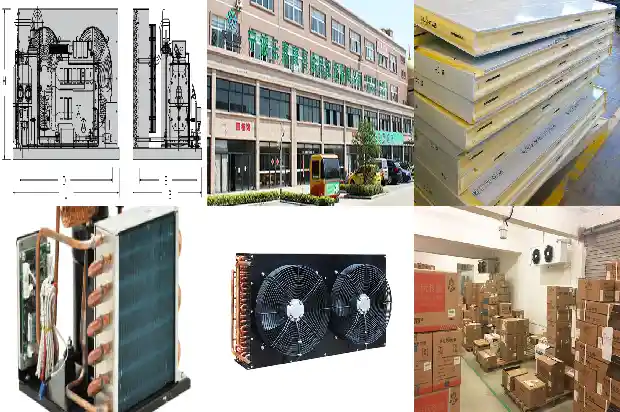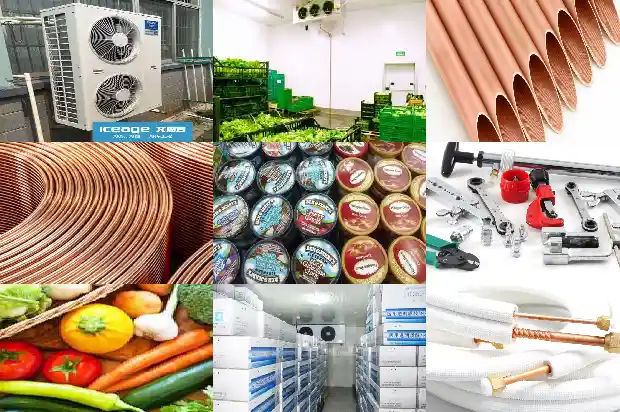What are the effects of pressure and temperature on the refrigeration system of a cold storage?
2024-09-10
A fault has occurred in the refrigeration system of the cold storage.


Detection of pressure and temperature in the refrigeration system
The refrigeration system can be divided into two parts, high pressure and low pressure, during operation. The high-pressure section is from the exhaust port of the compressor to before the throttle valve, and this section is called the exhaust pressure. The pressure at the suction port of the compressor is called the suction pressure, and the suction pressure is close to the evaporation pressure.
The refrigeration system can be divided into two parts, high pressure and low pressure, during operation. The high-pressure section is from the exhaust port of the compressor to before the throttle valve, and this section is called the exhaust pressure. The pressure at the suction port of the compressor is called the suction pressure, and the suction pressure is close to the evaporation pressure.
The influence of changes in suction pressure on the refrigeration system
The suction pressure is closely related to the evaporation temperature and the flow rate of the refrigerant. For a system using an expansion valve, the suction pressure is related to the opening degree of the expansion valve, the refrigerant charge amount, the cooling efficiency of the compressor, and the load size.
The suction pressure is closely related to the evaporation temperature and the flow rate of the refrigerant. For a system using an expansion valve, the suction pressure is related to the opening degree of the expansion valve, the refrigerant charge amount, the cooling efficiency of the compressor, and the load size.
The influence of changes in exhaust (condensation) pressure on the refrigeration system
When the refrigeration system is running, its exhaust pressure corresponds to the condensation temperature, and the condensation temperature is related to the flow rate and temperature of its cooling medium, the inflow amount of the refrigerant, the cooling load amount, etc.
When the refrigeration system is running, its exhaust pressure corresponds to the condensation temperature, and the condensation temperature is related to the flow rate and temperature of its cooling medium, the inflow amount of the refrigerant, the cooling load amount, etc.
Related Articles
- Winter Approaches: How to Solve the Low High - pressure Issue of Air - cooled Condensing Units?
- Common Pressure Valves and Protection Devices in Refrigeration Units
- How to Troubleshoot and Repair High - pressure Protection of Air - cooled Units?
- How to Read the High - and Low - Pressure Gauges of Refrigeration Air - conditioners?
- Air - conditioner Low - pressure Alarm? These Nine Common Causes
- Why Does the Evaporation Temperature of the Refrigeration System Drop Too Low? And Why is the Condensing Pressure Too High?
- What are the Cooling and Heating Pressures of an Air Conditioner? How to Calculate the Optimal Refrigerant Quantity?
- Common Causes and Analysis of High and Low Pressure Alarms
- Obscure Knowledge of Static Pressure, Dynamic Pressure, Latent Heat and Sensible Heat in the HVAC Industry
- Multi-split air conditioner: Nitrogen charging for welding, pressure maintaining, vacuuming and refrigerant charging
- What Causes Noise in Pressure Reducing Valves?
- Pressure Gauge in Refrigeration Equipment
- Reasons and Solutions for High and Low Condensing Pressure in Air-cooled and Water-cooled Systems
- Principle of Multiple Storages in One Unit and Evaporation Pressure Regulation Methods
- Causes and Solutions for Elevated Pressure in Cold Storage
- Analysis and Treatment of Common Low-Pressure Faults in Chillers
- Analysis and Treatment of Common Low Pressure Faults in Chillers
- 7 Reasons for Low Air Pressure in Cold Water Unit
